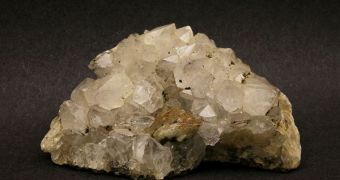The beautiful depth that crystals have is one of the things that have fascinated people since the early days of civilization. Fortune tellers use it to scout the future, while some believe that the stones channel mystical powers, which can be harnessed for various purposes. But scientists have no ambition of learning if that is true or not, for now. Rather, they are concerned about more basic questions, such as why exactly are crystals the way they are. Although it may seem a bit redundant, this simple question still has physicists scratching their heads, and no clear answers are yet in sight, NewScientist reports.
The underlying issue here is why atoms prefer coming together under a structure rather than the other. Experts cannot yet determine how a crystal will be structured and infer its properties from its atomic arrangement. University College London (UCL) expert Chris Pickard believes, however, that he may have found a way of predicting crystals' structures. It took many years of dedication for this, with his first studies taking place as a young PhD student at the University of Cambridge, in the United Kingdom.
At the time, he used a program called CASTEP, designed by his supervisor, Mike Payne. He relied on the fact that, naturally, all atoms tended to arrange themselves in a low-energy structure. It soon became painfully obvious that this was not the case in simple experiments, as nature indeed tended towards this type of structure, but did not take it to the extreme, where crystals were formed. In his studies of carbon atoms, known for their various structures (tetrahedral in diamonds and hexagonal in graphite), he noticed that atoms placed together in a chamber big enough to fit a crystal did not come together in a crystalline arrangement, but rather in amorphous, inhomogeneous masses.
For a while, he left these studies, only to return to them in 2004. He again used CASTEP, this time significantly improved, and aided by more powerful computers, alongside a new approach, graph theory. Upon running the simulations several times, he noticed that, occasionally, the structures he was looking for appeared. “I started to get sensible structures,” the expert says. In nature, he reveals, apparently trying over and over again is the key to success.

 14 DAY TRIAL //
14 DAY TRIAL //